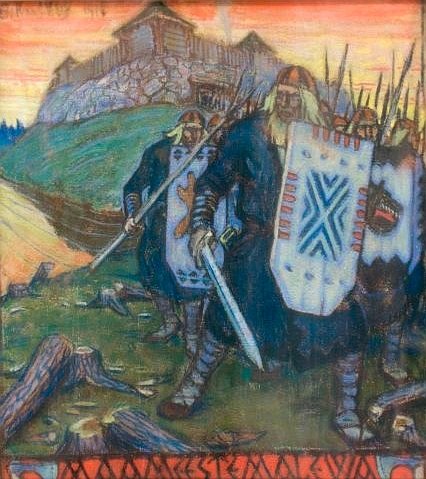I recently found an interesting excerpt from a 1893 book "Üleüldine Isamaa ajalugu" - "General History of fatherland". Most of its content is dated beyond recognition and irrelevant in the current era.
II. State government.
7. Kings.
In Pagan era, Estonians had no orderly nation or kings like there are in the current era. Their law was similar to the modern time, where everything was no in the hands of one man. Old books are telling about ancient Estonian kings. Danish king Froto won a city from Estonian king Harduan. He entered the town in women's clothes, opened the gates and let his troops in. Harduan got his state back after giving his daughter to Froto (1). Long since then, one powerful Estonian king Olimar went to war with Huns against Danish king Froto the III. He called Norwegians and Slavs to help in this endeavour. In 4th Century (that) powerful Estonian king made his neighbours shake in fear.
From the first Greek historian, Herodotus, we hear about his travels to the north in 500.BC, where he met northern people, including Estonians, who he called blackcoats. He also learned that their kings and way of life were similar to Scythians (2). Wulfstains letters in 9th century tell about how our kings were, it says "Estonia is big, there are many towns and every town has its king - kings and rich people drink horse milk, poor people and slaves drink mead." (3)
Often we have hear about kings of Courland and one Livonian king, whose son Biko (4) lived with Danish king Jamerich and who brought much trouble to his house. Before coming of Germans, our rulers were called princes and kings. Henry of Latvia tells about a leader who fell fighting against Germans in 1211. Our folktales and Kalevipoeg also tell us about kings and rulers.
1 - According to Saxo, Froto lived in 2.century AD. Saxo refers to the kings in the east as Rex orientales, this is how he referred to all kings who lived east of the Baltic Sea. In modern historical research, Saxo Grammaticus is mostly disregarded
2- Estonians are not actually related to Scythians, nor we were nomadic steppe people, as a greek, Herodotos might be referring to semi-hunter/farmer lifestyle that's different from rest of the "barbarians".
3 - Something that might be archaeologically truthful, there were around ~100 hillforts in Estonia at that time and he might have referred to all Baltic-Finns who were more closely related back then.
4 - Biko might be related to pikne which means lightning.
If anyone is interested, I might continue translating more of it and maybe add more commentary.
Here is the original text https://et.wikisource.org/wiki/%C3%9Cle%C3%BCldine_isamaa_ajalugu/I.A.II
